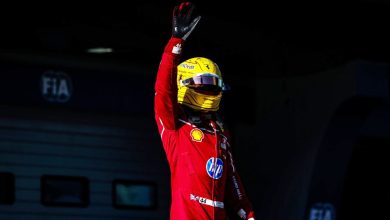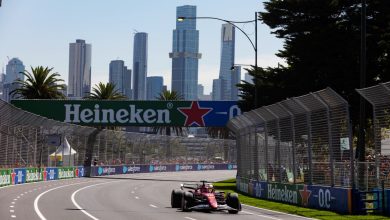The UIM F1H2O World Championship is the ‘flagship’ international series of single-seater inshore circuit powerboat racing.
Highly competitive, intensely challenging, risky and entertaining, the F1H2O World Championship is the ultimate adrenalin rush and regarded as one of the most spectacular and exciting sports in the world.
The series attracts up to 20 of the world’s leading drivers and is a sport that has to be seen to be believed as these diminutive tunnel-hull catamarans enter hairpin turns at over 90mph and top 140mph on the straights.
Picture the scene; 18 to 20 sleek, powerful and lightweight catamarans lining up on the start pontoon. Inside each cockpit sits a lone individual peering through a tiny windscreen. One hand grasps the steering wheel, the other poised over the start button. The tension inside the cockpit is intense as the drivers wait for the crucial start. Beyond the cockpit, an eerie silence descends over the entire arena, all attention fixed on the start.
No sooner does the wait end when 10,000hp of highly tuned brute power bursts into life sending the fleet screaming towards the first corner leaving nothing but a glorious fountain of white spray in its wake.
Now in its 35th year the four decades of the World Championship have witnessed considerable change and evolution; the seventies and eighties saw multiple promoters and two giant corporations of the sport OMC and Mercury vying for supremacy to be the pinnacle of the sport.
OMC were touting their 3.5litre V8 package that became known as the OZ class, Mercury pushing their 2.0litre engine and called the ON class, the disparity in power would soon lead to bitter wrangling and infighting amongst competitors.
The split came in 1981, FONDA was formed running the ON class engine with the OMC backed PRO ONE run series running the OZ class engine, both rival championships claiming the right to use the title World Championship, a dispute settled by the sport’s governing body the UIM later that year awarding the OZ class the accolade.
1984 saw the beginning of yet another twist as safety became a major concern with engine development and increasing power of the V8s taking its tragic toll and signaled the slow demise of the OZ class internationally, ending in 1986.
The door was now opening for the existing FONDA World Grand Prix series to reinvent itself. From 1987 to 1989 there was no official UIM World Championship, and with no challenger, the UIM reinstated the World Championship status and in 1990 the FONDA World Grand Prix Series became the UIM F1H2O World Championship, Mercury’s 2.0litre engine the preferred power-plant of the time, the Mercury 2.5litre engine coming in in 2000 and used today.
Over the last 34 years the sport has played out 273 Grand Prix in 32 countries across five continents, 13 drivers have captured the World title, 47 becoming members of the illustrious Grand Prix winners club.
Of the 13 World Champions seven are multiple title winners; Italy’s Guido Cappellini is the most decorated winning 10, Italy’s Alex Carella and American Scott Gillman with four, France’s Philippe Chiappe and Italy’s Renato Molinari with three each, Finland’s Sami Selio and Wales’ Jonathan Jones with two apiece.
While today’s F1H2O catamarans bear a striking resemblance to those in action throughout the 1980’s there is a world of difference in terms of driver protection and general safety.
The early boats were constructed from thin plywood with drivers sitting in an open, exposed cockpit with the risk of injury a high probability in the case of an accident.
With safety at the forefront of boat development, British designer and racer Chris Hodges set about improving the situation and constructed a safety cell that was produced from an immensely strong composite material.
Instead of the cockpit being part of the main structure Hodges’ capsule was separate and was fitted to the hulls and centre section. For the first time drivers were actually strapped into their seats. The idea was that if a boat was involved in an accident, the timber hulls could break up and absorb the impact forces while the driver remained well protected inside his cell.
In the late 1990’s further developments saw the introduction of an airbag in the cockpit that would inflate in a crash to ensure the capsule wouldn’t sink before rescue crews could attend.
Over the years boat construction has been developed and today few if any are built of timber, now replaced by modern composites.
In 2018 nine teams and 19 drivers from 12 countries will compete at Grand Prix in Europe, the Middle East and Asia for the coveted World title, the prestigious number 1 plate will be carried by the defending four-time World Champion, Alex Carella.







